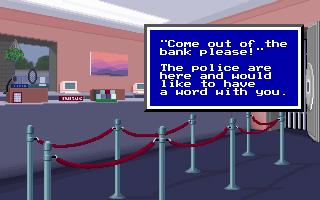
.png)
The memory expansion unit gave the Portfolio an additional 256 kB of RAM, which can be partitioned into several drives. Other expansion modules included a floppy drive, and a memory expansion unit. Most text-based MS-DOS applications could be run on the Portfolio as long as they did not directly access the hardware and could fit into the small memory. Expansion cards contained programs such as a chess game, a file manager, and a finance manager.

Built-in applications included a text editor, spreadsheet (Lotus 1-2-3 compatible), phone book and time manager. The expansion cards were backed up by a replaceable battery, which lasted approximately two years. Expansion cards were available in sizes of 32, 64, and 128 kB initially, and later were available in capacities up to 4 MB. It used a card expansion port for removable memory, which was not compatible with PC card as it predated that standard. There was an expansion port on the right side of the computer for parallel, serial, modem or MIDI expansion modules. The LCD was monochrome without backlight and had 240圆4 pixels or 40 characters x 8 lines. The on-board RAM had to be divided between system memory and local storage (the C: drive). It had 128 kB of RAM and 256 kB of ROM which contained the OS and built-in applications.

It was built around an Intel 80C88 CPU running at 4.9152 MHz and ran a variant of MS-DOS called "DIP DOS 2.11". The original founder of the company (first called "Crushproof Software") was Ian Cullimore, and the other two David Frodsham and Peter Baldwin. DIP officially stood for "Distributed Information Processing", although secretly it actually stood for "David, Ian and Peter", the three founding members of the company, all ex-Psion.


 0 kommentar(er)
0 kommentar(er)
